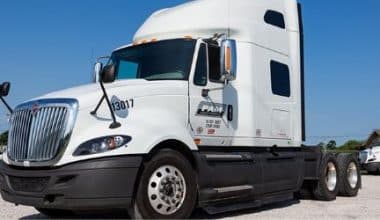A job description not only outlines the duties of the position but also lays the groundwork for attracting, nurturing, and keeping talent. It also creates the conditions for the best possible work output by making clear the duties, anticipated outcomes, and performance evaluation criteria. It is crucial for establishing a fair pay system and guaranteeing legal compliance. The document needs to be reviewed and updated in accordance with the cycle of annual performance reviews. In this article, we’ve provided guidelines for each component to assist you on how to write job descriptions that will draw in the best candidates.
Definition of a Job Description
The job description offers enough details to outline the main duties and necessary duties as they currently exist. They are “incumbent neutral” and not dependent on any particular quality of an incumbent (such as knowledge, skills, abilities, performance, devotion, loyalty, years of service, or degree), instead providing the information required to categorize the position, not the individual.
In order for the document to be usable even when minor changes take place, it should not contain every specific about how and what job is done. Although the supervisor must give his or her approval, job descriptions can be developed jointly by the employee and the supervisor.
Write a Job Description
The cornerstone of the hiring process is the job description. They facilitate the recruitment process and aid in attracting top talent. They also help set expectations for qualified candidates. A strong job description also gives employers the chance to make a good first impression. Consequently, while finding the time and resources to create accurate and interesting job descriptions can be hard, doing so is totally worthwhile.
Job Description Elements
A job description includes the following elements: the job title, the purpose of the job, the duties and responsibilities of the job, the required and desired qualifications for the job, and the working environment.
#1. Career Title
The job title is a succinct (1-4 word) description of the position that accurately captures its scope, purpose, and substance. It also aligns with other job titles for related positions at Wright State University (University).
An archivist, an associate director of disability services, an associate registrar, a director of student health services, a facilities planner, an accountant for grants, a budget analyst, an instructional designer, a manager of desktop services, and a manager of custodial services are a few examples.
#2. Job Objective
The job purpose, which usually consists of three or four phrases, gives a high-level overview of the position, level, and scope of responsibility. It gives the reader a “bird’s eye view” of the job. A brief explanation of “why the job exists.”
#3. Job Responsibilities and Duties
The essential functions of the work, sometimes referred to as the given duties and obligations, are described in this section. They outline the essential characteristics of the work that takes up most of the employee’s time. a few things to think about
#4. Duties and Obligations
Describe the position’s primary duties in detail. Make sure your list of duties is thorough but succinct. Also, stress any responsibilities that might be specific to your company. To ensure candidates understand the qualifications and can decide if they are qualified, include this information, for instance, if the position involves social media expertise to promote events and you are looking for an “Event Management” function.
#5. Required Credentials
This section outlines the amount of understanding needed to perform the work, including education, experience, knowledge, skills, and abilities. This section focuses on the “minimum” set of skills needed for a person to perform this job successfully.
#6. Experience
Specify the minimum number of years of full-time experience needed for the position as well as the kind of work experience that an applicant must have. It must be made clear whether levels of experience such as internships, undergraduate work experience, and graduate assistantships are acceptable.
#7. Salary and Benefits
Include a range of salaries. Good job candidates hunt for openings that match their compensation requirements. But in a 2019 Indeed survey, nearly 70% of applicants claimed they seldom or hardly ever read job listings with pay information.* Make yourself stand out from other employers by including the wage range in the job description to assist in drawing in the most qualified applicants.
The Importance of Job Descriptions
Writing job descriptions never seems to get any simpler, especially when you’re doing it for roles you don’t fully understand. Let’s first talk about the significance of job descriptions before moving on to the writing process.
Job descriptions are beneficial for both businesses and potential employees. This is why:
#1. Draw Potential Candidates
In order to draw in quality candidates, a job description that is clear and attractive will be crucial. When using tools like LinkedIn, Facebook, Twitter, and email, it is possible to advertise jobs instantly and with an exponentially wide audience.
#2. Establish Goals
All parties will be successful if the job description is clear. Prospects will know what is expected of them, more qualified candidates will apply, less qualified candidates will move on, and you will save a ton of time by sorting through applications and corresponding with possible candidates.
#3. Getting Ready for Interviews
Both candidates and interviewers can prepare for the big day with the aid of a well-written job description. Candidates will be in a better position to prepare for potential conversation topics, and interview teams will be better prepared to probe candidates about their qualifications.
#4. Create an Outstanding First Impression
Job descriptions frequently serve as candidates’ initial point of contact with your business and might influence how they perceive it. Any jargon or grammar mistakes will turn a candidate off and provide a negative first impression, just like on resumes and CVs.
#5. Streamline Your Search
It takes a lot of time to look for work, especially for the 73 percent of applicants who are passive and already employed. Job seekers may compare salary, benefits, bonuses, and even business culture to evaluate which positions are worth applying to with the help of clear and simple job descriptions.
#6. Create a Baseline
The job description will serve as a starting point to gauge growth when a candidate is hired and be used as a reference during performance reviews and future training opportunities.
How to Write a job description on LinkedIn
The first opportunity for your candidate to learn about your function is through a strong job description. Make sure it is engaging, precise, and thorough enough to draw in the most suitable applicants. You can also utilize relevant keywords, such as the sectors you work in and the job responsibilities you perform, to assist the ideal applicants in finding your job posting.
Here are some other tips to help you create a strong job description:
- Use a common title for the position to make it easier for qualified candidates to find your posting while conducting a job search.
- After posting your position, add important abilities in the Add Skills area.
- Include relevant job duties and industry information in your advertisement to make it easier for candidates to find it.
- Please fill out all other questions as completely as you can so that our matching algorithm can locate the best prospects for your posting.
- When describing duties and tasks, be precise.
- Describe any particular needs (in some cases, the best candidates might not match every one of them).
- By selecting your company name from the dropdown list, you can link to your firm’s LinkedIn page.
- List any extra advantages or perks, such as stock options, flex time, or a 401k, in the Description area.
- In order for your coworkers to share job postings with people in their networks, you should ensure that they are using LinkedIn.
- Use the job description template (attached below) to get started and differentiate yourself from other applicants.
How to Write Resume’s Job Description
A well-written resume and job description can give hiring managers crucial cues about your character as an employee and the potential value you can add to a company. Regardless of your qualifications, demonstrating a track record of applying your knowledge and abilities to other businesses should improve your chances of getting the job. By adhering to a few straightforward rules, you can appropriately summarize your prior accomplishments.
What is a job description for a resume?
The portion of your resume where you mention your prior employment, projects, volunteer work, and other pertinent professional experiences is known as the “job description section.” Your resume’s work history section should demonstrate to the hiring manager that you have the qualifications and experience necessary to properly carry out your job obligations. This means putting more emphasis on your accomplishments than on things like your official job description or business information.
#1. Include a Job Description at the Top of Your Resume’s First Page
The description of a prospective employee’s prior employment is frequently viewed by hiring managers as the main indicator of whether or not they may possess the essential abilities to succeed. This part should therefore be simple to find since hiring managers frequently start with it while reviewing resumes. Think about placing this part before others like “skills” or “education” to make sure the individual reading your resume understands exactly why you are qualified.
#2. Add a Sufficient Number of Pertinent Experiences
Depending on where you are in your career, you should put a different number of previous jobs on your resume. According to your background, use the following criteria to decide how much work experience to include on your resume:
Candidates without Prior Employment:
Include details about any experiences that might be relevant, such as unpaid internships, part-time jobs, volunteer work, or participation in student organizations. In order to make it brief and pertinent, include up to four or five roles.
Entry-Level Candidates:
These individuals have an average of one to five years of work experience. Mention every paid job you’ve ever had, especially any that are related. To make it more concise, include up to four or five roles. If you have less than four roles of paid job experience, think about adding volunteer or internship positions.
#3. Include Key Details about the Position and Employer at the Start of each Description
You should list the official job title, the name and location of the employer, as well as the duration of any previous professional experience you’ve had. To show where you are in your career right now, experiences should be put in reverse chronological order, with the most recent experience at the top of the list.
Each mentioned position should include the following details to be complete:
- Job title
- Business name
- City and state (or country, if international)
- The duration of your employment
- Description of the business and your function
- Your greatest successes and triumphs
Good Job Descriptions Examples
Here are some examples of job descriptions that accomplish that and what you can learn from them.
#1. Trim the Lengthy Section about Your Business
Many businesses begin their job descriptions with a boilerplate sentence that introduces the business. However, you have a careers site and a LinkedIn Company Page for this reason. Keep your company description succinct and think about shifting it to a less noticeable area on your job offering so that candidates may learn more about your business elsewhere.
#2. Delete Buzzwords and Pointless Qualifications Without Mercy
Make short sentences.
Use headers to divide parts, and use bullets as necessary to make text easier to read.
To identify what is actually required to complete the task, pare down your list of needs. And if there are any legal obligations, make a note of them at the conclusion.
For example, Red Bull's job descriptions are succinct and to the point, with a short list of prerequisite education and experience. Big blocks of text or interminable jargon are not present, which is especially crucial given that more candidates are reading job descriptions on mobile phones. Brief and impactful takes effort; long and dull is simple.
#3. Substitute “you” for “the ideal Candidate.”
The folks on the opposite side of your job description are just that – people, regardless matter how serious or informal your culture is. As a result, write as though you were conversing to them. In order to get your best applicant to say, “Yes! That’s me,” be conversational, direct, and personal.
GitLab describes the duties and qualifications for each position as though they were presenting it to their ideal applicant. They state, for instance, "As a Product Design Manager at GitLab, you will be responsible for managing a team of up to 5 talented Product Designers."
What are the Five Steps to Writing a Job Description?
- Determine who your ideal applicant is.
- Hook them with a compelling title.
- Inform them of your business.
- Explain the duties of the position and the qualifications you’re seeking in clear terms, and emphasize the unique qualities that make your business stand out.
What is the Ideal Job Description Format?
A job description includes the following elements: the job title, the purpose of the job, the duties and responsibilities of the job, the required and desired qualifications for the job, and the working environment.
How Do You Start a Sentence in a Job Description?
Use an action verb to start each phrase. For more impact, include examples. Define any acronyms or jargon.
How Long Should a Job Description Be?
Typically, the best-performing job descriptions range in length from 300 to 700 words. Most of the time, “less is more.” You don’t want visitors to your career site to feel as though they are reading a legal document.
What Makes a Job Description Attractive?
Impressions are important. Whether they apply or not, this job description may be all the reader knows about your business. Make use of the chance to promote the business. Emphasize your company’s culture and achievements.
What is a Realistic Job Description?
A recruiting tool called a Realistic position Preview (RJP) is used to explain both the positive and negative aspects of a position. In essence, it is utilized to give a potential employee a truthful understanding of what the job entails.
What is the First Part of the Job Description?
A job description usually starts off with the job title. It immediately conveys to potential employees whether the position would be a good fit.
Conclusion
A good job description will give candidates enough information to decide whether they are qualified for the role. Furthermore, according to a survey conducted by Indeed, 52% of job searchers say the caliber of a job description has a very or extremely significant impact on their choice to apply for a position.
Related Articles
- TECHNICAL WRITER: Job Description, Duties & How to Become One
- WHAT ARE NONPROFIT ORGANIZATIONS: WHO THEY ARE AND WHAT THEY DO
- HOW TO WRITE A JOB DESCRIPTION: The Ultimate Guide
- WHO IS A FREELANCE WRITER: Job Description, Salary & Online Jobs
- HOW TO CALCULATE TAX RATE: 2023 Complete Guide






